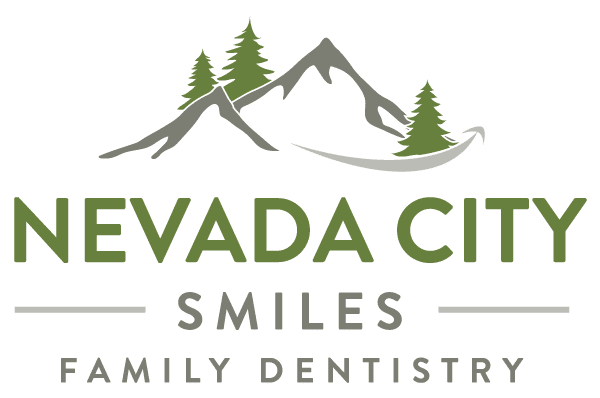A buildup of pus resulting from a tooth infection.
The connector component of a dental implant.
The material used for silver fillings.
A numbing agent used for certain procedures.
Anterior generally refers to things that are closer to the head or front of the body.
The root’s tip.
The state of being free from harmful microorganisms.
The loss or wearing away of tooth structure by abrasive forces.
The complete displacement of a tooth from its socket in the bone.
A bitewing is a type of dental X-ray that shows the upper and lower teeth in one view. The name comes from the fact that the X-ray film is held in place by a “bite wing” – a small, curved piece of plastic – that the patient bites on.
A whitening procedure performed to remove stains from the teeth and brighten their color.
A dental restoration that replaces one or more missing teeth by joining an artificial tooth to adjacent teeth or dental implants.
The grinding of the teeth.
The canine teeth are the four-pointed teeth located at the front of the mouth, two on the top and two on the bottom.
A small, painful ulcer can occur inside the mouth. They are usually white or yellow in color and have a red border.
Caries is the decay of the tooth that causes demineralization and destruction of the tooth structure.
A cavity is a hole in the tooth that can be caused by decay.
A dental cast is an oral health care device that is used to create a negative replica of a patient’s teeth.
Cementation is the process of attaching a dental restoration, such as a crown or bridge, to the tooth.
Chlorhexidine is a powerful antiseptic and has been shown to be effective in reducing plaque and gingivitis.
A clasp is a device used to retain a removable partial denture in the mouth.
A cold sore is a viral infection that can cause blisters and sores on the lips.
A type of dental filling used to restore decayed teeth while retaining cosmetic appearances by matching the tooth color.
A crossbite is a condition in which the upper teeth bite on the inside of the lower teeth.
A crown is a type of dental restoration which completely encapsulates a damaged tooth.
The process of tooth deterioration caused by bacteria in the mouth producing acids that eat away at the tooth enamel.
The branch of medicine that is concerned with the diagnosis, prevention and treatment of diseases, disorders and conditions of the oral cavity.
Refers to the general condition of a person’s teeth, including both primary and permanent teeth.
A denture is a removable prosthetic device used to replace missing teeth.
A denturist is a professional who makes, fits and repairs dentures.
The process of reducing or eliminating a person’s tooth sensitivity.
The process of identifying a disease or condition.
A gap between two neighboring teeth.
The distal surface of a tooth refers to the area facing away from the center of the mouth.
Having no natural teeth remaining.
A dental field specializing in the study and treatment of dental pulp.
The emergence of a tooth into the oral cavity.
The surgical removal of tissue.
Term used to describe a tooth that has been pushed out of its normal position in the mouth.
A type of dental restoration which repairs and restores the function, integrity, and morphology of teeth that have been damaged by caries or trauma.
A temporary denture provided while awaiting the permanent denture.
A hygienic tool used to clean the areas between the teeth and remove any stuck food material.
A natural mineral that helps to prevent tooth decay by making the tooth enamel more resistant to acid attacks from plaque bacteria and sugars in the saliva.
The process of applying fluoride to teeth in order to help prevent cavities.
A fracture is a break in the bone or tooth.
A framework is the metallic base of a partial denture that is used to support artificial teeth.
The first stage of gum disease in which the gums become inflamed and irritated.
The medical term for heavy bleeding.
The action taken to stop bleeding.
A tooth that fails to emerge and remains below the gum line. This most commonly occurs with wisdom teeth.
A dental implant is a prosthetic device that replaces the tooth root and anchors a restoration.
A model taken to capture a detailed structure of the teeth or full dental arch.
The biting edge of the front teeth.
The thin four front teeth along the upper and lower jaw.
A custom-designed repair created to restore or repair the areas between the cusps on the molars.
The space between two neighboring teeth.
The back side of the tooth that faces the tongue.
Refers to the direction toward the midline of the mouth.
The teeth located in the far back corners of the mouth that are commonly used for grinding food while chewing.
A device developed to serve a variety of functions in improving health and protecting the teeth. Typically, a mouthguard may be used to prevent injury during sports or reposition the jaw to open the airway.
Similar to a mouthguard but thinner, the night guard is used to prevent teeth grinding in the sleep.
The biting surface of the molars.
The relaxed fit of the upper and lower jaws when the mouth is closed.
A custom-designed repair created to restore or repair the areas on top of the cusps on the molars.
The poor tooth alignment classified by upper teeth not contacting the lower teeth.
A field of oral care dedicated to the correction of misalignment of the teeth or jaw.
The overlap of the upper and lower jaw when the mouth is closed.
The name provided for filling material that extends beyond a cavity.
The roof of the mouth.
A type of x-ray used to capture a wide image of all the teeth in the mouth and the bone and tissue surrounding the teeth.
An opening found in an oral structure.
The area surrounding the root tip of the tooth.
The dental field that specializes in the study, diagnosis, and treatment of gum disease.
The adult teeth that begin emerging around six years old once primary teeth are lost.
A piece of metal used for filling retention.
The process of making a tooth or filling appear clean and smooth.
An artificial tooth in a bridge or denture.
A pin used to support a significant buildup on a tooth.
Toward the back of the mouth.
An insurance approval performed prior to treatment.
Medication needed before treatment.
One of the eight teeth located between the incisors and molars in each quadrant of the mouth.
A medication that has been ordered in quantity and direction directly by a dentist through a written statement to a pharmacist or lab technician.
Otherwise known as the baby teeth, these teeth are the first to emerge in the mouth and are later replaced by the permanent teeth.
A thorough dental cleaning commonly provided every six months at the dental office.
An artificial component used to replace a missing oral structure.
A special dental field that focuses on the process of prosthetic replacement of a missing tooth or structure.
The inner tissues within the tooth that contain the nerves, vessels, and blood flow within the tooth.
The removal of pulp.
The removal of the top portion of pulp.
An x-ray.
A routine appointment with the dentist.
The process of rebonding a prosthetic or appliance in the oral cavity.
The action of restoring the function of a tooth or section of the mouth.
An appliance used to retain the position of teeth following orthodontic treatment.
The repeated process of performing a root canal treatment on the same tooth.
The bottom part of the tooth.
The canals that extend through the root of the tooth.
The treatment and cleaning of a root canal; usually performed while removing the infected pulp of a tooth.
The cleaning of the tooth roots.
A rubber piece used to isolate an area of the mouth during treatment.
The removal of plaque and tartar below the gum line.
A plastic material applied to the biting surfaces of the teeth to prevent tooth decay.
A medication administered to relax patients and ease their anxiety before a dental procedure.
An appliance used to maintain a space between two teeth.
A device used to restrict movement.
The joint that connects the jawbone to the skull.
An abnormal bony growth that may develop from the palate.
A cosmetic appliance used to conceal imperfections along the front surface of a tooth.
The third and final molars that erupt from the gum tissue.
The absence or critical lack of saliva in the mouth.


